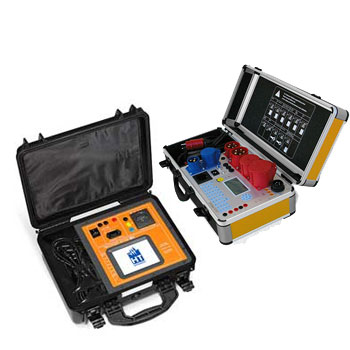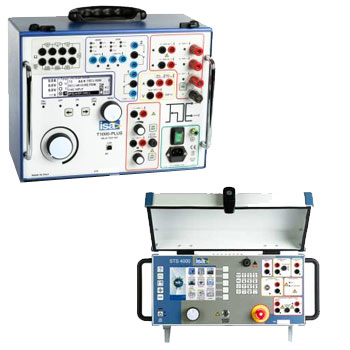
Pressure Gauges & Digital Pressure Meters – precise indication, robust design
Mechanical pressure gauges (e.g., bourdon tube) and digital pressure meters cover applications from simple local indication to high-resolution measurement with peak/hold, min/max, and data logging. Depending on use, you can choose versions for vacuum up to high pressure, with glycerin fill for vibration, in hygienic designs, or with ATEX/IECEx approval. Optional electrical outputs (switch contact, 4–20 mA/0–10 V, IO-Link, Modbus) are available.
ICS Schneider Messtechnik supports you with selection, materials and process connection, damping and protection, calibration, and — if required — IIoT integration to edge/SCADA/cloud. The result is reliable indication, fewer failures, and traceable measurement quality.
FAQ on Pressure Gauges & Digital Pressure Meters
Answers to common questions on selection, accuracy, filling fluids, installation, materials, switch contacts, calibration, and digitalization.
What’s the difference between mechanical gauges and digital pressure meters?
| Feature | Mechanical gauge | Digital pressure meter |
|---|---|---|
| Indication | Pointer/scale | LCD/OLED, numeric |
| Functions | Simple, robust | Min/Max, Peak, Hold, Tare |
| Accuracy | Class 1.0–2.5 (typ.) | up to ±0.05…0.25% of FS |
| Power | None | Battery/mains |
| Outputs | Optional switch contact | Analog/switch/bus optional |
Which accuracy class do I need?
For process indication, Class 1.6–2.5 is often sufficient; for test/reference tasks choose Class 0.6–1.0 or digital devices ≤ 0.25% FS. Your process tolerances are decisive.
How do I choose the right measuring range?
Working pressure × 1.3–2.0 as span. With pulsation/spikes, select a larger range or add damping. Use dedicated scales for vacuum/absolute pressure.
When is glycerin filling useful?
With vibration and pressure shocks. The filling damps pointer flutter, protects mechanics, and improves readability. Observe the fluid’s temperature range.
Which process connections are common?
| Connection | Standard | Note |
|---|---|---|
| G 1/4 / G 1/2 | ISO 228 | Industry standard |
| ¼" NPT / ½" NPT | ASME | US installations |
| Tri-Clamp/Varivent® | Hygienic | Food/pharma with diaphragm seal |
| Flange | EN/ASME | High pressure/aggressive media |
Which housings/materials suit my medium?
Brass for neutral media (air/water/oil), stainless steel 316L for more demanding media, Hastelloy®, Monel®, Tantalum for strong corrosion (usually with a diaphragm seal). Seals per medium (FKM/EPDM/PTFE).
Absolute, gauge or differential pressure — which is correct?
Gauge (g) vs ambient (hydraulics/pneumatics), absolute (a) for vacuum processes/barometry, differential (Δp) for filters/flow/level.
How do I read dual scales (bar/psi/kPa) correctly?
Many dials are dual-marked (e.g., bar/psi). Use one unit consistently. For reports, SI (bar or kPa) is recommended; document conversions.
What matters during installation?
- Mount with low vibration and ensure good visibility.
- Provide venting/draining (siphon/cooling for steam/high temperatures).
- Avoid applying bending loads through the fitting.
How do I protect against pressure spikes?
Use restrictor screws/snubbers, capillaries, or remote mounting with diaphragm seal. For digital devices, adjust damping/peak capture.
What ingress protection ratings are available?
Typically IP54–IP65, and IP67/IP69K for wash-down. In hazardous areas follow ATEX/IECEx (e.g., Ex ia) and approved accessories.
Are there gauges with switch contacts?
Yes — contact gauges (mechanical or reed/magnetic). Alternatively, digital meters with limit relays or analog output.
What functions do digital pressure meters offer?
- Min/Max/Peak (fast events), Hold/Tare
- Unit switching (bar, psi, kPa, MPa)
- Backlight, swivel adapters, data logger/USB
- Optional: 4–20 mA, 0–10 V, switching outputs, IO-Link/Modbus
How accurate are digital devices by comparison?
Depending on model ±0.05…0.25% FS, sometimes including temperature compensation. Check the total error band over the specified temperature range.
When should I use a diaphragm seal?
For hot, viscous, crystallizing or aggressive media and in hygienic applications. Select diaphragm material, fill fluid, capillary length, and process connection accordingly.
How often should I calibrate?
Recommendation: annually for standard processes; for QA/safety loops semi-annually/quarterly. After overload/vibration check immediately. Store certificates securely.
Which unit conversions are relevant?
| From | To | Factor |
|---|---|---|
| 1 bar | Pa | 100,000 |
| 1 bar | psi | 14.5038 |
| 1 psi | bar | 0.06895 |
| 1 mbar | Pa | 100 |
How long do batteries last in digital meters?
Typically 6–36 months depending on backlight, sample rate, and logging. Auto-off and adjustable sampling extend life.
Can I connect digital devices to my control system?
Yes. Models with 4–20 mA/0–10 V, switch outputs, or RS-485/IO-Link can connect to PLC/edge and be published to dashboards via MQTT/HTTPS.
What are common fault causes and remedies?
- Pointer flutter: vibration → add glycerin fill/restrictor.
- Sluggish indication: damping too strong → adjust settings.
- Zero offset: temperature/overload → rezero/calibrate.
- Leaks: check seals, apply correct torque.
What temperature ranges are permissible?
Ambient often −20…+60 °C; medium depends on design. Use a siphon/cooling element for steam/coolants; ensure CIP/SIP resistance for hygienic use.
How do I document measuring points properly?
Record device ID, medium, range, accuracy, connection, materials, installation location, calibration history and — if networked — signal/topic (IIoT).
Are hygienic or EHEDG-compliant solutions available?
Yes — with crevice-free housings, Tri-Clamp/Varivent®, suitable gaskets, polished surfaces, and appropriate diaphragm seals/fill fluids.
Which cost options should I consider?
| Option | Benefit | Note |
|---|---|---|
| Glycerin fill | Vibration damping | Outdoor/mechanical protection |
| Restrictor/snubber | Spike & pulsation protection | Extended lifetime |
| Diaphragm seal | Media/hygiene suitability | Select material/fill |
| Calibration cert. | Traceability | DAkkS/ISO as needed |
| Output/bus | Automation/IIoT | PLC/edge integration |
Do you support selection and calibration?
Yes. We verify medium/temperature, choose connection/materials, size range/damping, supply calibration certificates, and — on request — integrate with your control system or cloud.
























































































































































































